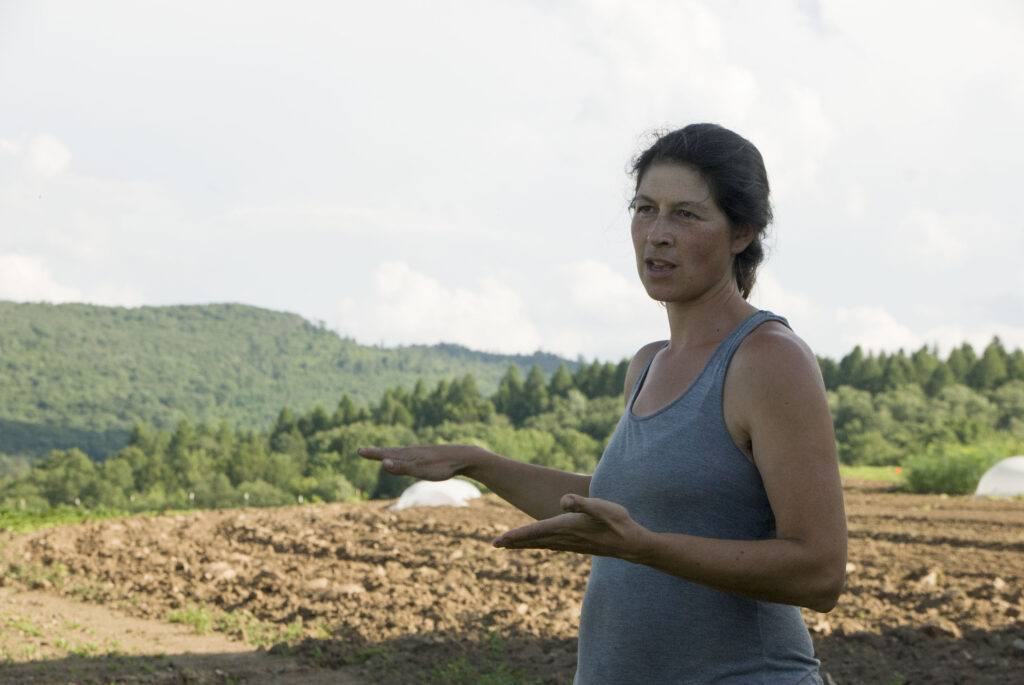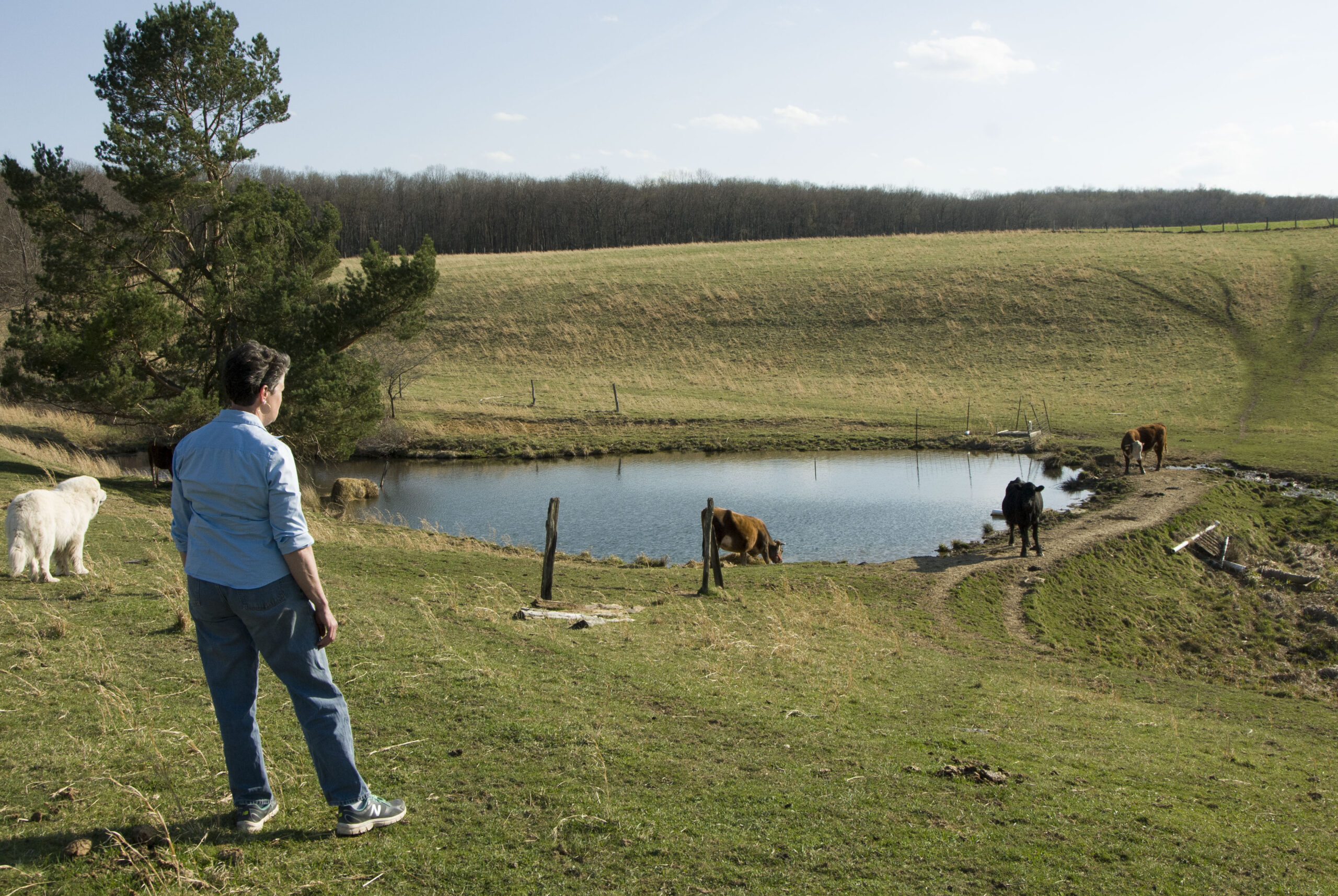Many seek out locally sourced foods as coronavirus spikes
By ALDONA BIRD
Newsroom@DominionPost.com
MASONTOWN — As COVID-19 cases spiked across the United States beginning in March, sales of locally produced food also rose.
Initially, the coronavirus pandemic resulted in short-term grocery store food shortages nationally. At the same time, in the Preston/Mononongalia county area, demand for locally produced food immediately increased and has stayed high.
In West Virginia, as in the rest of the country, most food sales are not local. Our food originates out of state, and even out of the country. The supply and distribution system of food is centralized to a large extent.
As Micheal Pollan wrote in the June 11 issue of the New York Review, describing the national glitch caused by the viral impact, our food system is divided into two parts — the industry supplying grocery stores, and the other supplying restaurants.

COVID shutdown
The lockdowns, which closed restaurants, resulted in a glut of products in one industry, which lacked mechanisms needed to switch immediately to supply the increased demand in the grocery market.
An immediate viral impact effect occurred in slaughterhouses, which also operate on a national scale. When local authorities responded to outbreaks and rapid spread of infection among workers by closing slaughterhouses that serve the inter-state agricultural and food processing and distribution industries, farmers were left with a surplus of animals ready for slaughter.
Consumers, meanwhile, following reports of euthanized livestock, faced fears of grocery store meat shortages and food safety concerns.
Local growth
Our local food production trends reflect the surge in COVID-19 cases, the state lockdown and national food distribution developments since the pandemic started. As the global food chain weakened, local supply chains worked at or beyond capacity to pick up the slack.
“The numbers have jumped for this time of year — usually it’s a little slow in the summer — but I would say it’s probably 40% more than it is in the fall, when you’re usually really busy,” Art Lipscomb, of Art’s Commercial & Custom Meat Packing in Tunnelton, said.
Lipscomb has operated his shop, certified by the state, for 17 years, and has five employees. He butchers and sells meat from livestock he raises as well as butchers for other farmers.
He noticed increased customer demand at the end of March/start of April, with infection numbers still relatively low in West Virginia. As local farms experienced the increased demand, the need for animal processing and packing skyrocketed.
“There is a six- to eight-month backlog to get through the system,” said West Virginia Department of Agriculture Deputy Commissioner Joseph Hatton, describing the current state of West Virginia’s small meat processing operations.

System breakdown
Kathy Evans, of Evans Knob Farm in Bruceton Mills (growing produce and livestock), said she heard via her network that farmers euthanized livestock, and “dairy farmers were dumping milk by the tank.” Evans said she didn’t know of any in-state farmers who had to go to those lengths.
Many farmers across the nation contract with large meat processing plants, according to Evans. When the virus impact on workers’ health broke the production chain, farmers also lost out.
Animals ready for processing had to be wasted or fed and cared for until a solution was found. Meanwhile, other animals were reaching harvest weight.
Large processing plants are homogenized to only process animals of certain sizes and weights. Too big, and they’ll break the machinery.
Darwin Stemple, farmer of Stemple Brothers Farm (livestock and produce) in Terra Alta, gave the example of hogs — to be processed at a large processing facility, they must be between 290-310 pounds. “Anything above or below that they’ll refuse,” Stemple said.
This weight restriction put a wrench in the system when facilities shut down.
“A lot of those hogs that they’re having trouble moving through the facilities out West are moving east, and then being processed by a lot of the local mom-and-pop stores, or facilities,” Hatton said.
He said the WVDA’s understanding was that these animals came from Midwest farms facing processing facilities bottlenecks due to coronavirus outbreaks.
Hatton said this loss for local producers benefited customers.
“The consumer is getting a good, fresh, wholesome meat product to enjoy,” Hatton said.
The WVDA waived health certificates on these animals to be processed immediately, to avoid another bottleneck in the system.
“When they hit this part of the country,” Lipscomb said, “they were everywhere.” He said they began arriving at the end of May/beginning of June, and continued for about five weeks. This added to the backlog in the system, and Lipscomb said he had to schedule appointments for these hogs months out.
“Personally, our shop used about 75 of them,” Lipscomb said, causing his shop a 200% increase in hog sales.
“It really hurt the hog market, but it helped the people,” he said.

Local impact
A small facility such as Liscpomb’s doesn’t limit size or weight because, “we do most everything by hand,” Lipscomb said.
The disruption of the national food chain also had a local impact.
“Because the companies are so large, they are catering to grocery store chains, and restaurants and school systems, and when all of that closed down this spring because of the COVID — all of this meat and dairy products, they didn’t have anywhere to send it in bulk,” Evans said, “but yet there were families that were starving. They were hungry, they couldn’t get meat and milk and eggs.”
According to Pollan, there are four major companies in each of the two sections of the industry. None were prepared to adjust to disaster, or to send excess meat, which normally would have gone to schools or restaurants, to the grocery sector, which also supplied food banks and pantries.
Farmers adapt
When disruptions hit a smaller farm, adjustment can be quicker.
Early in the pandemic, farmer Sunshine Vortigern, of Round Right Farm (primarily produce) in Terra Alta, saw change coming.
Knowing restaurant orders and farmers markets would be uncertain, she and her husband assessed their growing capabilities and increased their available CSA (Community Supported Agriculture) shares accordingly. She didn’t anticipate selling many shares. But 86 new members signed up, maxing out the farm’s capacity.
“We still have 25 to 30 people on a wait list,” Vortigern said.
She credits the increase to some customers not reliably finding what they want at grocery stores during the pandemic, and to reluctance to enter stores.
Increase in CSA shares filled the gap left by decreased restaurant sales. Vortigern said their June sales to three Morgantown restaurants was down about a third of June 2019 sales, and July sales were about half of July 2019 sales.
Excess produce goes to community members in need, Vortigern said. She donates via an in-home care provider and Conscious Harvest Cooperative in Morgantown.
Stemple, a founding member of the Preston County Farmers Co-op, which supplied Preston County with fresh and frozen produce, said his direct to customer sales balanced out the lost sales to the school system.
Flexibility Vortingern and Stemple were able to use isn’t possible when the scale goes up. Larger farms and companies take longer to adjust to a quickly changing market.
“This was a problem way before COVID,” Jennifer Kahly, of Possum Tail Farm (grass-fed beef) said, adding, “it’s just now that people have been seeing it.”
She said she usually doesn’t have trouble getting a butchering appointment.
Now, like other farmers, she struggles to ensure her animals are processed at appropriate times.
“Our food system is obviously broken, because this whole COVID thing really put to light how inflexible — it’s not set up so that any changes can be adapted,” Evans said.

Federal response
In response to authorities on local levels shutting meat plants during outbreaks, President Donald Trump issued an executive order on April 28.
The executive order classified meat as a national defense material, and instructed regulatory agencies to adopt and revise rules necessary to keep meat supply hitting the North American tables.
Since this order, conglomerate-owned meat processing and packing plants have reopened across the nation, although national media has carried stories of continuing worker infections at the plants.
Hatton said animals and products are no longer being wasted; that only happened for a short time. He said the animal protein industry is not flexible in the short term, but resilient and adjustable over time.
“This is a wonderful time to go and recognize that most of our food is not local,” Hatton said, adding an average American dinner travels about 1,500 miles to get to the table.
Hatton said more than 50% of the value of agriculture comes from out of the country. This creates a weak food chain, in which one glitch — such as factory workers getting sick — causes problems both up and downstream.
Increased demand
Customers have learned to adapt. “When this started, our sales at the farm tripled,” Stemple said.
“Our meat sales are up probably half to two-thirds more than what we were doing last year,” Evans said, adding, “our egg sales are through the roof.”
She said her CSA shares also sold out, and she added as many customers as she could.
She’s seen that workers, at the facility where she takes her animals, are run ragged. They’ve added new staff, and are still struggling to meet the demand.
Evans would normally have interns and volunteers helping on the farm, but now she has to handle the increased demand with fewer helping hands, due to caution in bringing new people to the farm during the pandemic.
Lipscomb said he struggles to find employees in non-pandemic times, and has been unable to expand his staff. To keep his small staff and customers safe, he offers only curbside service.
Hatton said at Department of Agriculture, “we have maintained our food safety programs throughout the pandemic.”
He said the department has increased laboratory capacity for food safety testing.

Bringing it home
In addition to wanting to buy locally, Hatton said people also want to grow their own produce and animal products.
“There is a tremendous interest from society right now to figure out how to grow their own food,” he said.
To help those lacking immediate family history and knowledge, the Department of Agriculture offers a webinar series on homesteading, with topics such as canning to help first timers preserve harvests.
“We also have published the West Virginian Grown list,” Hatton said, “so that the consumer can go and try to make those connections.”
Vortigern said she worries about farms experiencing a yo-yo effect when virus impacts decrease and people return to choosing convenience over local food.
“If you are using your local resources now, and you are enjoying them, and they’re meeting your needs,” she said, “don’t forget about them once life returns to normal.”
To invest in food security and keep small, local food producers in business, Evans said, “I just can’t stress how important it is that they buy from local farms and support the local food shed as much as they can.”
Hatton said it is important now more than ever to “know your farmer, know your food.”
Tweet @DominionPostWV




